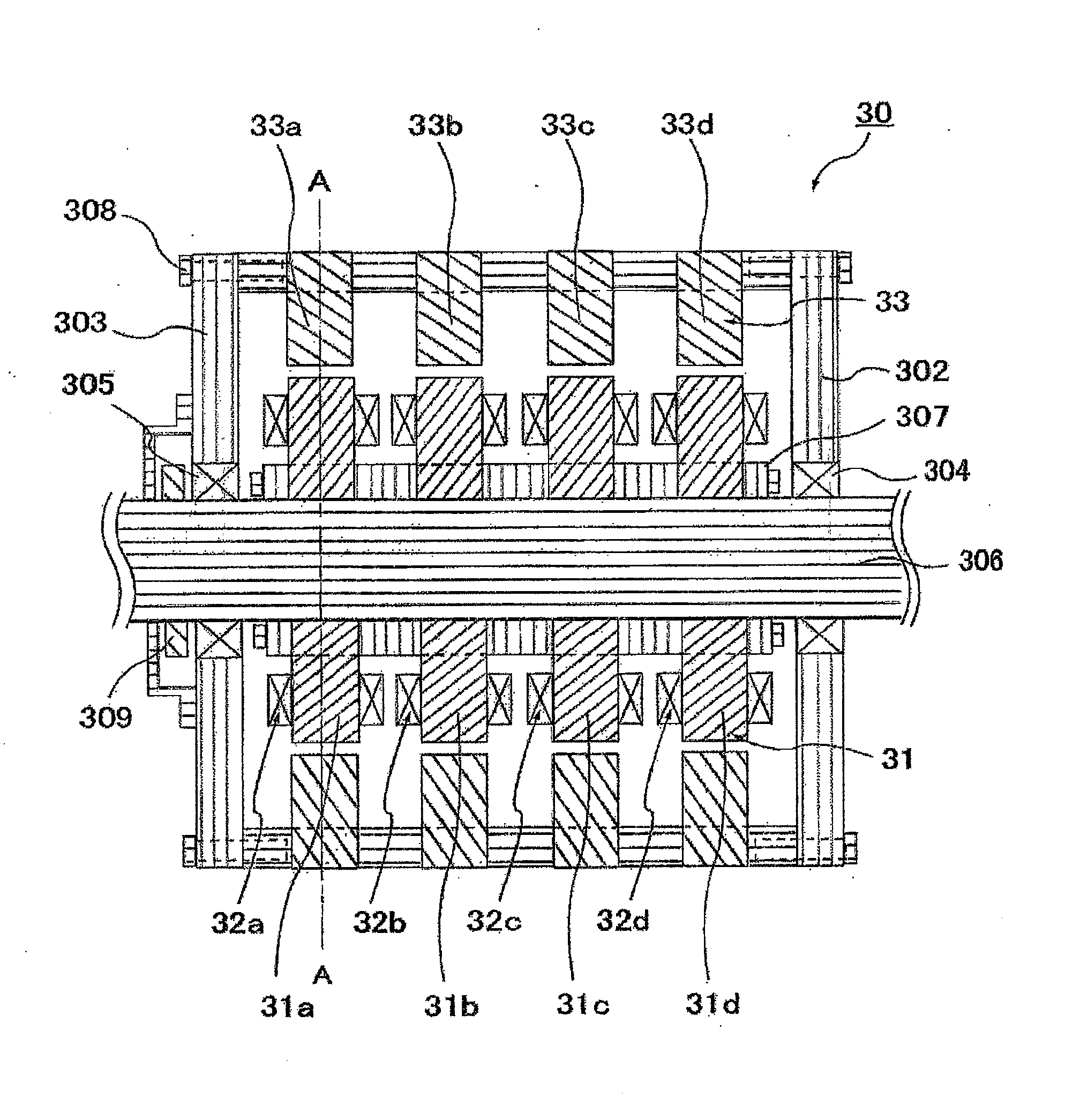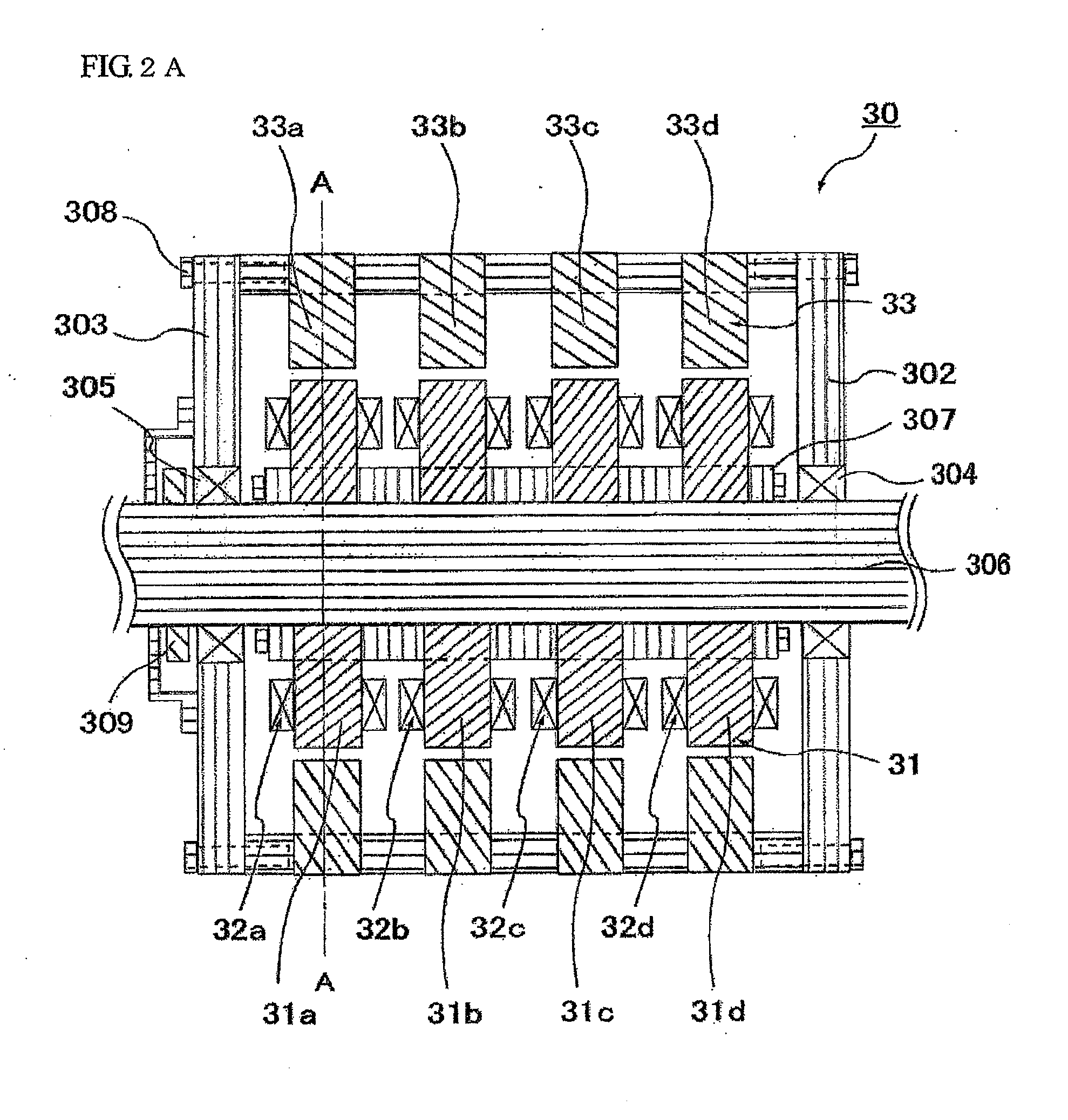Switched Reluctance Motor and Switched Reluctance Motor Drive System
a technology of switched reluctance and motor, which is applied in the direction of dynamo-electric machines, instruments, master clocks, etc., can solve the problems of induction motor, weight and efficiency, and efficiency further reduced, and achieve the effect of reducing torque ripple and vibration of switched reluctance motors
- Summary
- Abstract
- Description
- Claims
- Application Information
AI Technical Summary
Benefits of technology
Problems solved by technology
Method used
Image
Examples
Embodiment Construction
[0045]Embodiments of the present invention, as best mode for carrying out the invention, will be described hereinafter with reference to the drawings. It is to be understood that the embodiments described herein are not intended as limiting, or encompassing the entire scope of, the present invention. Note that like parts are designated by like reference numerals, characters or symbols throughout the drawings.
[0046]FIG. 1 is a schematic block diagram showing a basic structure of a switched reluctance motor drive system 1 according to an embodiment of the present invention. Referring to FIG. 1, the switched reluctance motor drive system 1 comprises a DC (direct current) constant current power supply unit 10, a current switching device 20, a switched reluctance motor 30, and a current switching control circuit (flip-flop control circuit) 61 (refer to FIG. 6). The DC constant current power supply unit 10 outputs a DC current having a value corresponding to a command from a control syste...
PUM
 Login to View More
Login to View More Abstract
Description
Claims
Application Information
 Login to View More
Login to View More - R&D
- Intellectual Property
- Life Sciences
- Materials
- Tech Scout
- Unparalleled Data Quality
- Higher Quality Content
- 60% Fewer Hallucinations
Browse by: Latest US Patents, China's latest patents, Technical Efficacy Thesaurus, Application Domain, Technology Topic, Popular Technical Reports.
© 2025 PatSnap. All rights reserved.Legal|Privacy policy|Modern Slavery Act Transparency Statement|Sitemap|About US| Contact US: help@patsnap.com



